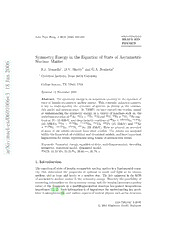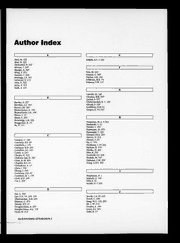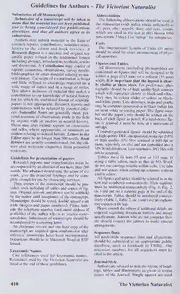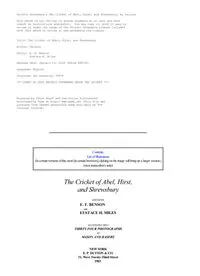
The Cricket ofAble Hirst and Shrewsbury PDF
Preview The Cricket ofAble Hirst and Shrewsbury
Project Gutenberg's The Cricket of Abel, Hirst, and Shrewsbury, by Various This eBook is for the use of anyone anywhere at no cost and with almost no restrictions whatsoever. You may copy it, give it away or re-use it under the terms of the Project Gutenberg License included with this eBook or online at www.gutenberg.org/license Title: The Cricket of Abel, Hirst, and Shrewsbury Author: Various Editor: E. F. Benson Eustace H. Miles Release Date: January 15, 2019 [EBook #58702] Language: English Character set encoding: UTF-8 *** START OF THIS PROJECT GUTENBERG EBOOK THE CRICKET *** Produced by Chuck Greif and the Online Distributed Proofreading Team at http://www.pgdp.net (This file was produced from images generously made available by The Internet Archive) Contents. List of Illustrations (In certain versions of this etext [in certain browsers] clicking on the image will bring up a larger version.) (etext transcriber's note) The Cricket of Abel, Hirst, and Shrewsbury EDITED BY E. F. BENSON and EUSTACE H. MILES ILLUSTRATED WITH THIRTY-FOUR PHOTOGRAPHS BY MASON AND BASEBE NEW YORK E. P. DUTTON & CO. 31, West Twenty-Third Street 1903 PRINTED BY KELLY’S DIRECTORIES LTD LONDON AND KINGSTON. EDITORS’ PREFACE. There appear to be hardly any beginners or habitual players who know how to profit by seeing experts at play and at work. The reason cannot well be that we do not look on at games sufficiently often! No, one reason is that we have not been trained to observe with a view to personal experimentation afterwards; and another reason is that there is very little time to catch and realise the different positions and movements as they flash by. Hence the value of photographs, especially when they are—as many of these thirty-four are —taken from behind: it is not easy to reproduce for ourselves the action as shown by an ordinary photograph (taken from in front), since it gives us everything the wrong way round. But even photographs often fail to teach their lesson. The learner must be told how to teach himself from photographs. After which he will find it easy to teach himself from actual models, as soon as he knows just what to look out for—the feet and their “stances” and changes, and so on. It is to be hoped that these photographs, and the notes on them, and the obvious inferences drawn from them, will train readers to study various other experts besides these three, who are only a few out of a host. For the object of the book is not to tie any player down to any one method, but rather to set him on the track of independent research and self-instruction: to show him how to watch and see, and how to practise the best things that he sees, and what the best things are most likely to be. Not a single hint in these pages need be followed until the reader is convinced that what I advise is what most if not all great players actually do, whether consciously or by instinct. The volume is not intended to compete with the many excellent books edited by those who themselves play the game well. It boasts of a large debt to these classics, but having gathered hints from them it moves away on altogether different lines. The best player is seldom the best teacher of average beginners. On the principle of “Set a thief to catch a thief,” a duffer has here been set to teach a duffer, while at the same time the whole teaching is, I hope, strictly according to the actual play of good players, as shown by observation, by photographs, and by answers to questions asked during special interviews. The three chief players (whose ascertained positions and movements are made the basis for all the simple lessons offered here) are Abel, Hirst, and Shrewsbury. The editor of this volume used to play Cricket at school about as well or as badly as he used to play Racquets. After his school and undergraduate days at Cambridge, he discovered many fundamental faults in his play at Racquets—faults which abundant practice had strengthened and fixed into bad habits—ineradicably and hopelessly bad habits, his critics said. He had some hints from the best professionals (Smale, Latham, and others); he studied their positions and movements carefully; then, chiefly by the help of certain easy and healthy exercises in his bedroom for less than five minutes a day (Mr. Edward Lyttelton constantly recommends bedroom-practice for Cricket, and quotes the success of Jupp thereby), he found that he was gradually removing those habits, and building better habits which persisted in subsequent play in the Court itself. Quite recently, after noticing the various positions and movements of the great experts of Cricket (including the three professionals whose photographs appear in this volume), he concluded that there had been remarkably similar faults, and no less fundamental faults, in his Cricket, though of course the games of Cricket and Racquets have marked differences. He thinks that these faults were amply sufficient to account for his past failure to enjoy Cricket (that is, to improve at Cricket), just as the other faults had proved sufficient to account for his past clumsiness at Racquets. He therefore devised special exercises by which he might eventually be enabled to do himself less injustice at Cricket also.[1] These he intends to practise regularly in order to secure the bodily mechanisms of play, to make them his very own, before he once again meets those “disturbing elements” in Cricket (as in Racquets and Tennis), the ball and the opponents. Whether he will ever become a cricketer or not he cannot say—he does not expect to become one in less than a year or two: so numerous and deeply ingrained were his mistakes, so execrable was his style, if he is to believe his most candid friends and enemies! But at least he can safely say that these mistakes—which he observes to be common to nearly all duffers and most beginners—are now so absolutely obvious as to supply ample reasons for any amount of his failure in all kinds of batting, in all departments of fielding, as well as in bowling. He can safely say that until he has mastered those positions and movements which nearly all the experts already have as a matter of course, until he has learnt the A B C, built the scaffolding, formed the skeleton, or whatever one likes to call the process, he will certainly not become a cricketer. He cannot reasonably expect the tree to bear fruit for a long time yet; but he hopes the fact that he himself is practising what he preaches will encourage others to give the method—sensibly adapted according to their individual opinions and needs and models—a fair and square trial, as thousands have already given a fair and square and successful trial to the simpler diet. The method is urged as claiming a reasonable experiment before condemnation: that is all. It is not meant to harass and cramp all players, so as to make them uniform, any more than the learning of the alphabet and of spelling is meant to harass and cramp all writers. He only describes what he believes to be the correct alphabet and spelling of words in Cricket. Out of this alphabet and these words let each player subsequently form his own sentences and paragraphs and chapters. Let each player develop to the full his individual merits and specialities. But not until he has made the alphabet and the vocabulary his very own, to use easily at will, is he likely to develop his individuality satisfactorily and successfully, any more than a builder would be likely to build a good house without good bricks, mortar, and wood, and some knowledge and practice of the best ways of using them. The suggestions are one and all based upon the practice or the teaching of successful players. Of the three special models here, not one has the advantage of superior height, and at least one had not the advantage of athletic physique. The instructions point out the apparent foundations of batting, bowling, and fielding, and, by contrast, the apparent faults to which the natural duffer like myself is liable. It is hoped that critics and other readers will kindly offer every possible hint and correction. Each true lover of games, whether he play or watch or both watch and play, must see that if this way be good—this mastery of the instruments of play, in addition to the usual net-practice and games—it surely will improve the health and physique of the nation; will bring in more recruits for Cricket; will enable the busy man to keep up at least his muscular, if not his nervous apparatus, so that he need never get considerably out of practice or training, and need never, as too many thousands have done, give up the game merely {vii} {viii} {ix} {x} {xi} {xii} because he has not time to play the game itself regularly. The editor feels assured that any feasible five-minutes-a-day system like this, which may tend to spread the greatest of games more widely, and to raise our national standard of skill, enjoyment, and physique, will be received by every patriot in the spirit in which it is offered; namely, as perhaps useful for most, and probably healthy and harmless for all. Every sensible person will agree that if the game is going to be played at all—and it certainly is—then it is worth playing well, and therefore worth learning well and practising well. Whether these exercises and general hints will help towards my end—towards a game better played all-round (in batting, bowling, and fielding), better watched, and so better enjoyed—experience must decide. But all will concede that these exercises are not less pleasant and wholesome than those of drill and dumb-bell and strain-apparatus; that they are far better adapted than these are as a preparation for the noblest of sports and for much of daily life itself, since they encourage not mere strength and vastness of muscle, but also full extensions in various directions, promptitude to start in any required direction, rapidity to carry the movements through, endurance to repeat them, self-control to keep or recover poise in spite of the fulness and rapidity and promptitude and unforeseenness of the motion; to say nothing of the corresponding mental and moral excellences. If the system demands only a few minutes each day then in so far as it is correct—and it will be gradually corrected as observations and criticisms pour in—it will prove well worth while, especially on wet days (which are not unknown in England), and in winter, for those who do not grudge many hours a day to Cricket itself with all its waitings and watchings and disappointments. The system is the chief new feature of this book, which, however, does not by any means underestimate the equally essential coaching by schoolmasters and professionals and others, and net-practice and practice-games as an addition to the system and as the test of its merits or demerits. These ought we to do, and not leave the other—the system which teaches this very alphabet of Cricket—undone, especially to- day when the majority of people are cooped up in cities without the chance of a practice-game or even of a net. The plea is not for uniformity of style, but for reasonable mastery of the spelling of words before we write essays; for a system of self-teaching and self- correction; for a system of training and practice when regular play is out of the question; for a drill which fathers and uncles may teach their children and nephews; for a healthy and interesting use of odd minutes which would otherwise be wasted or worse than wasted. POSTSCRIPTS. 1. Mr. C. B. Fry’s advice in “Cricket” (just published by C. Arthur Pearson, in 1903) should be carefully read. He says: “To train his muscles for heavy weight-lifting is precisely what a cricketer ought not to do. . . . It is remarkable how much a player can improve himself . . . . by simply practising strokes with a bat and no ball or bowler. But this is easily understood when you perceive that the actual correctness of a stroke, so far as the movement of the feet and of the arms is concerned, is entirely independent of the ball. To make a stroke with the correct action and to time the ball are two distinct things ; both are necessary in a match, and you can learn the second only with a ball bowled at you; but the first you can certainly to some extent acquire by mere chamber drill. “It is also worth knowing that much may be done with a ball hanging by a cord from a beam or a tree. A little ingenuity renders practice at the swinging ball quite valuable.” 2. The death of Shrewsbury in May, 1903, has been a great loss to Cricket and cricketers. His enthusiasm, his mastery of certain mechanisms of batting, his calm confidence and patience, his gentleness and good nature, made him an almost unique personality in the world of Cricket. CONTENTS. PAGE Editors’ Preface vii CHAP. I. — Batting and Running 1 II. — Bowling 56 III. — Fielding and Throwing-in 103 IV. — Notes on Wicket-keeping, Captaining, Implements 120 V. — The Importance of All-roundness in Cricket 138 VI. — Faults in Play and Practice 149 VII. — General Training for Cricket 166 VIII. — Special Exercises and Notes on Practice 181 IX. — Fallacies of Theorists and Others 208 X. — Merits of Cricket 225 XI. — Suggested Reforms 233 Appendix I. — The Editors’ Defence of this System for Beginners and Others 249 Appendix II. — Laws of the Game 268 LIST OF ILLUSTRATIONS. {xiii} {xiv} {xv} {xvii} {xvi} I.—Waiting for the ball, with the weight balanced almost evenly upon the two feet (which are near together), but rather on the right foot [Facing page 22 II.—Forward play: the bat has been drawn straight up and back (not in a curve) before the stroke [Facing page 25 III.—Playing back: the right foot has retired nearer the wicket, so as to give longer time for seeing the ball. (Note.—The bat should be held straight. This photograph was taken before Shrewsbury was in practice) [Facing page 26 IV.—The glide: both feet well back [Facing page 28 V.—Playing back: right foot retired, to give extra time for seeing the ball; weight on right foot. This was Shrewsbury’s stroke when he felt “beaten” by the bowler [Facing page 29 VI.—Playing forward to a ball on the off: the straight bat has passed near and beyond the left foot in a “follow- through.” Notice the fingers, especially the first finger and thumb of the left hand. At the end of the stretch the left arm is fully extended, and the right heel has come off the ground Between pages 30 and 31 VII.—Playing forward to a ball slightly to the leg side: see remarks on previous photograph, and notice the head well over the bat-handle Between pages 30 and 31 VIII.—Playing forward to a straight ball: see remarks on previous photographs Between pages 30 and 31 IX.—Position of hands and fingers at the end of the forward stroke: the left hand has shifted round, the right hand holds the bat with thumb and first finger only [Facing page 35 X.—Preparing to drive with a pull: the left leg is well out so that the bat may get nearer to the pitch of the ball [Facing page 39 XI.—Preparing to pull a short ball: right foot across, so as to help the stroke well round to leg Between pages 40 and 41 XII.—Preparing to pull a short ball: right foot across and well back, so as to make the short ball still shorter Between pages 40 and 41 XIII.—Hook-stroke to leg: both feet well back, but weight on right foot Between pages 40 and 41 XIV.—Cut-drive. Right leg firm and straight, left leg bent and well across [Facing page 41 XV.—The late cut: right foot well across, left leg extended so far as to bring heel off ground Between pages 42 and 43 XVI.—The late cut: right foot well across, left leg extended Between pages 42 and 43 XVII.—The way of running out with fairly long steps, weight should be chiefly on right foot and right leg should be ready to serve as firm pivot Between pages 46 and 47 XVIII.—Abel’s way of running out, with feet interlacing Between pages 46 and 47 XIX.—Turning quickly at the crease after the first run [Facing page 50 XX.—Bowling, third position: bowling arm extended fully forwards and downwards, body facing forwards, back leg fully extended [Facing page 61 XXI.—Bowling, second position: bowling arm extended fully upwards, body coming round with arm [Facing page 61 XXII.—Bowling, first position: bowling arm back and down, body facing sideways, weight on back leg [Facing page 67 XXIII.—One of Hirst’s grips when he bowls: the little finger does not touch the ball, and only the knuckle of the third finger does Between pages 70 and 71 XXIV.—Same grip for right hand bowler Between pages 70 and 71 {xviii} {xix} XXV.—Another of Hirst’s grips: all the fingers touch the ball, the little one only just with its side Between pages 70 and 71 XXVI.—Same grip for right hand bowler Between pages 70 and 71 XXVII.—Bowler waiting for ball to be thrown in: he is standing well back from the wicket [Facing page 91 XXVIII.—Fielding a low ball with one hand: the opposite leg is fully extended [Facing page 112 XXIX.—Fielding, second position: the hand drawn back behind the ear, somewhat further back than most American Baseball fielders prefer [Facing page 114 XXX.—Waiting for a catch: elbows ready to draw back slightly the moment the ball touches the hands Between pages 116 and 117 XXXI.—A one-handed catch: body bent slightly back from the hips Between pages 116 and 117 XXXII.—Fielding a ground ball: no interval left for the ball to get through; body well down to the work Between pages 118 and 119 XXXIII.—A waiting position at point, where there is less foot-work than at most places. It is easier to rise quickly than to stop quickly Between pages 118 and 119 XXXIV.—Preparing to throw in with the high action Between pages 118 and 119 THE CRICKET OF ABEL, HIRST AND SHREWSBURY. CHAPTER I. BATTING AND RUNNING. I.—INTRODUCTORY. It was once thought that the universe moved round our earth merely as its accompanying condition, existing simply and solely for the sake of our earth. And so the batsman has been, and generally still is, regarded as the centre of cricket, for whose enjoyment the rest of the players subsist. Batting seems best worth while, not so much because of the qualities, such as pluck, which it demands, as because of the pleasure it may give. The reason why most people like batting, even if they hate wicket-keeping and fielding and watching, and do not bowl, is the enjoyment of striking and of scoring runs. Perhaps in this there is some relic of the desire for hitting and killing—the desire for overcoming and controlling Nature, for using power. Moreover, batting includes defence as well as attack; indeed the safest defence may really be to attack boldly. Batting at its best and fullest involves a complexity of characteristics: it involves back-play, with gliding and late cutting, pulling, forward play, with the cut-drive and ordinary drive, the “half-cock” stroke, the snick; a decision between these varieties, followed by a hit, then recovery of balance, then a decision whether one shall run or not, then perhaps a run, then a turn at the crease—and much besides this. It may involve a great change of habit. Thus in many other ball-games the ball is hit when it is further off from the striker’s foot—as in Golf, Racquets, Tennis, Lawn Tennis, Fives. In Cricket, except in such strokes as the pull and the cut, the ball should be hit when it is near to the striker’s foot. He who is not born a batsman, he who wishes to be made—that is, make himself—an all-round batsman, must learn not only general rules like this, but also details with regard to the individual strokes. In studying these details he will meet divergent theories; here again is scope for individual trial and judgment, and for observation. He can notice what the best players actually do, for, as Murdoch says, this is of more importance than what they think they do. The would-be batsman, therefore, is offered perhaps a few really universal laws, and certainly many general hints, yet he must judge of each hint by its results in his own case after fair experiment. He must be a free agent. He may find that the advisers have assumed that he has little reach, little activity, whereas he may be a Ford or Abel for reach, a Jessop or Abel for activity, without the safety of a Shrewsbury or the strength of a Hirst. Why should such a one be tied down by a law that in forward play he shall not let his bat pass beyond his left foot, if he has it in his power to send his bat with force many inches beyond that point, and so smother the ball? Who shall bind down such players? On the other hand, who shall spoil the slow player’s pleasure and safety by bidding him run out? Throughout this chapter all rules or hints are submitted to the test of utility for the individual. They must be studied; questions must {xx} {1} {2} {3} {4} be asked of coaches and others, who should explain strokes by doing them; the mechanisms must be found out, and also the causes and reasons for them. These mechanisms—some will be described later on—must be mastered, if not in early life, then now; they must be mastered sensibly, not with huge bats and balls to begin with, but with lighter implements. The advice must all be judged by its effects. If the reader will bear in mind that the mechanisms suggested, together with the other helps, are not necessarily the best (though they are based on a study of what the best players actually do in games), he will treat them in the right spirit, with a view to sensible trial and judgment by fruits. Anyhow, be these helps right or wrong, it is obvious that, by all except the genius player, some A B C should be acquired as a personal possession and habit before much regular play has confirmed bad habits. Mr. Edward Lyttelton insists on this in the following passage, after he has described what is needed for a correct stroke:— “Now from these principles, which some might call truisms, a very important practical maxim proceeds. All sound rules of batting should be practised by a young cricketer without the ball as well as with it. The grammar of the science can be partly learnt in the bedroom; the application of the rules must be made on the green sward. Many a finished batsman has tried this plan. Five minutes devoted every night by an aspiring cricketer to a leg hit, or cut, or forward play at a phantom ball, will gradually discipline his sinews to the required posture, besides sending him to bed in a right frame of mind. “I think it was Harry Jupp who used to ascribe his astonishingly good defence to a habit of this kind. He used to place a large- sized mirror on the floor—not for purposes of personal vanity—but to see if the bat moved in a straight line. To make the test better, a line was drawn along the floor from the centre of the mirror, along which line the bat was to move. The least deviation was then manifested, not only at the end of the stroke, but while it was being made.” 2.—THE ALPHABET OF SAFE BATTING. It is not part of the alphabet of safe batting to meet and attack the ball always. Both W. G. and C. B. Fry began their careers with safety, with the stopping of balls; afterwards they proceeded to splendid execution. The A B C of safe batting is not quite identical with the A B C of effective batting, which will be considered in subsequent sections of this chapter. One of the first rules of safety is said to be to “keep the eye on the ball.” This rule needs alteration.[2] Before the delivery the eye should watch the bowler’s arm, wrist, and fingers; Shrewsbury owed to this observation of something besides the ball a long innings against the Australians many years ago. To foretell a change in direction, length, pace, break, etc., is not easy by the sight of the ball alone. It is after the ball has left the bowler’s hand that it must be sedulously watched. Nor can it always be watched right on to the bat; exactly how far it can be watched is a much disputed point. Certainly few batsmen can carry out the golden rule of Golf. I believe that most of them—I speak from my own Tennis and Racquet experience—take their eyes off the cricket-ball too soon. Few err by looking at it too long. In my games, almost without exception, the longer I look at the ball the better my stroke is. The second law is correct timing. There are several kinds of good sight; I doubt if any one of them by itself brings with it that desirable faculty, “the good eye.” Ranjitsinhji and others rightly include, under the timing, the judgment as to the flight (direction, pace, etc.), the decision as to what is or is not to be done, the command that the best things shall be done, the correct combination and co- operation of the requisite parts at just the very moment.[3] I believe that the good eye, where it is not already a natural or acquired habit, means a splendidly accurate and therefore healthy working of a vast number of more or less separate nerve centres and nerves; but that what is often called “a good eye” is nothing of the sort—it is a mastery of certain correct mechanisms, which, if a man possesses them for his own, can produce an even better effect than the most superb eyesight without such mechanism. I may have a far better sight and eye for games than a fairly well-taught golfer who knows what muscles to use, and has these as half-automatic habits; but put me against him, and ask any spectators which of us has the better eye, and they will very likely point to my opponent. If this be so, then the third rule will be to have already secured the best possible mechanisms, and to have made them easy and sub-conscious; at first perhaps they may be conquered one by one; in the end, however, they must be not independent units, but co- operating parts of a unit—members combining and working together in harmony, as in some businesses, adding power each to each, relieving one another. These mechanisms include, for many strokes, and especially the forward strokes, the “straight bat,” i.e., the bat held straight and not sideways as it meets the ball; with its handle nearer to the bowler than its blade is; with the end of its blade just to the side of the left foot; the bat moving as straight as may be towards the approaching ball from start to finish (the finish being a follow- through after the ball has been struck); quickness of foot and leg to start and to move, the right leg being the base and pivot; the power to get right to the pitch of the ball or else to wait for it as far back as possible; straight and fast and full extensions of various limbs in various directions; a control of many different strokes, and especially, in these days of fast plumb-wickets, a control of the forward stroke. The reader will best realise the number of these mechanisms if we mention (and if he meanwhile realises by trial) some of those which are parts of the ordinary forward stroke:—the right leg straight and unbent, the right foot firm, the left foot and leg sent out towards the ball (a little to the left of the line of flight), the left elbow and wrist shot well forward at full stretch (in order to keep the ball down), the right shoulder forward and down, the bat moved straight down and towards the approaching ball and beyond it (not necessarily straight along the line between the wickets), the weight brought forward with the head of the bat, the recovery of balance and position, and the readiness to run directly after the ball has been struck or missed. If one has run out first, then the right foot will still have to serve as a firm pivot for the whole stroke, which must be a single movement. This will give some idea of what the correct mechanisms are, quite apart from individual peculiarities in the use of them. Such correct mechanisms may be acquired separately as I acquired my Tennis mechanisms, and as fencers acquire their fencing—mechanisms of lunge, wrist-play, etc.; but it is part of the A B C of correct play to have already acquired them as correct members of a correct whole before the game begins. Add to these the mechanisms and the combination of mechanisms for other strokes, such as back-play, cut, pull, etc., and the reader will agree that the A B C of batting is no light work for anyone, except the born player who apparently has not had to learn it letter by letter. Out of the list of useful mechanisms a few will now be suggested. It is for the reader to judge how far they actually are used in the strokes of leading experts. Each example must be compared with the positions and movements of the best models, as shown in {5} {6} {7} {8} {9} {10} photographs like these, or in actual games or practice. SOME SAMPLE EXERCISES. Before attempting these exercises, the reader should find out the principles of correct practice, some of which are suggested in Chapter VIII. One or two of the most vital may be selected here. (1.) Decide whether it is worth while to play Cricket at all; if so, whether it is worth while to improve your standard of skill; if so, whether these and your own exercises are likely to be of appreciable help. (The exercises are not meant to take the place of net- practice and games, which are indispensable, but to make them more pleasant and useful.) (2.) During the exercises, concentrate your whole attention either upon the muscles at work, or upon their reflection in a looking- glass. (3.) Aim at correctness, and therefore begin slowly and carefully before you repeat any given movement. Freedom, pace, endurance, strength will then increase almost of their own accord. Freedom and pace may best be acquired by movements done at first without implements, afterwards with light implements. I found these two preliminary stages invaluable in the preparation for my games, perhaps especially for the sharp movements of Racquets. The worst possible beginning is any “exerciser” that requires a tense grip. (4.) In case of a fault (discovered by yourself or pointed out by others), seek to exaggerate the opposite fault. Among the most useful exercises for batting, as for bowling and fielding, are the fast and full and straight extensions of various muscles and muscle-combinations, with economy of the unused parts, and without loss of, or with immediate recovery of, the body’s balance, and readiness to be directed elsewhither. It is likely that these pages contain errors, but I think that if one were to ask a good player where he ached most of all after his first practice or game in the season, one would find that the aches were mainly due to these extension movements (of the latissimus dorsi, below and behind the arm-pit, etc.). For the feet and legs, (i.) Lunge far forward (but not so far as to strain yourself) with the left foot and leg in a direct line (not a curve) in various directions (perhaps along various chalk lines upon the floor) with full weight—the head should come almost over the left foot—but with rapid recovery of balance. (ii.) Start to run in the forward direction afterwards. (iii.) Practise the position and movement for backing up and a quick start to run. (iv.) Practise the movement for turning at the crease, as shown in the photograph of Shrewsbury. For the neck. Move the head round, at first slowly and carefully, from side to side, then up and down, and so on; but do not strain. For the trunk: the body’s force is great, as—to use an old illustration—one can see when one bumps against a wall in the dark. (i.) The body-swing from the hips is a most useful movement. Keeping the legs as stiff as possible, and the head as still as possible, twist round the shoulders, first to the right, then to the left. (ii.) Bend the trunk forwards, and then sideways, from the hips. For the shoulders, arm, and forearm. (i.) To the lunge of the left foot add an equally full and direct and fast lunge of the left shoulder, elbow, and wrist. Your head should come forward also, above your left foot. Imagine yourself to be aiming at a ball, and see that your left wrist is in a line between your eyes and some object, say a chair’s leg in the bedroom. (ii.) Jerk the forearm (and wrist) as if you were whipping a peg-top or shaking out a clogged stylographic pen. For the wrist and fingers. Flex and twist the wrist and each finger far and fast in various directions. After freedom and pace have been acquired, but not before, some strength can be added by resistance—as by holding a dumb-bell during the movements, or by using some grip machine. Let us apply these—a few out of many mechanisms for all-round batting—to forward-play. The excellent words of Mr. Edward Lyttelton must be quoted first. He says:— “You will see from these directions that it is a very complex action, far from easy to do all at once, so that by careful practice if not by the light of nature you must first learn to do it properly without the ball, then with it. Establish the motion as a habit before the stress of the crisis begins.... It is thought that just as great players of yore reached eminence without being subject to coaching in early youth, or indeed in some cases after being completely self-taught, so boys of the present day would stand a better chance if they were less drilled than they sometimes are, and were left to find the use of their limbs by a vigorous, if unkempt style of hitting. The Englishman’s instinct, said a Frenchman, is to go out of doors and hit or kick something as hard as he can. This being so, why not let boys learn to hit as they please till they are sixteen or seventeen, and then perhaps a few rules might be taught them? But if taught beforehand, they only cramp the style, and take away the enjoyment of the game. Nature must be the best teacher; etc., etc.... But it is not at all easy to secure this habit, and therefore you should remember it carefully in your bedroom....” Pretend that you are going to play forward, and hold a stick in your hands. Now, moving your fingers as you come forward (see below), lunge with your left foot along a straight line, and send your head over your left foot. (If you tend to deviate from the line, probably towards the left, then exaggerate towards the right.) Keep your eye on the foot till the foot can take care of itself. Regard it as a servant that you must first watch carefully till the correct work shall have become half-automatic; then only an occasional glance of supervision will be required. Add to this lunge the extended lunge of the left wrist, elbow, and shoulder straight along a line parallel to and slightly to the right of the left foot. The stick should be lifted straight back and up before the stroke (though the blade of a bat, as in Racquets, will face outwards at {11} {12} {13} {14} {15} {16} the top of the lift), and should then come forward in a direct line close to the left foot, and afterwards follow through beyond the left foot. Do not forget to keep both that foot along its line and the left wrist along its line by aiming say at some spot on the wall. After the lunge with the whole weight, recover balance, look up, and prepare to run forward. Later on, do this and actually start forwards a few steps. That is part of the physical apparatus which a good average forward-stroke demands. There is no space to describe the requirements of the other strokes—the cut, etc. They can easily be seen from the photographs and from the play of experts. And some additional exercises will be offered under the special headings below. PRACTICE OUTSIDE THE NETS. In addition to these and other movements, which may be tried at first either before a large mirror or else with a teacher behind to correct and perform correctly by way of instruction, Mr. Edward Lyttelton mentions the practice of certain strokes with a ball in the pavilion. Any old room will do. And the narrower the implement of batting the more easily it will show the errors of batting; the lighter the implement, the better it will develop pace and freedom. A stump or stick or broomstick will do; a light indiarubber ball will do. If you cannot get a bowler, then you can throw the ball—a Lawn Tennis ball will do—up against a wall, and play forward or back to it with a stick. I know a player who did this with very good results. Games of “Snob-cricket,” and of Cricket with smaller ball and narrower bat, should be far more frequently tried for the sake of practice. Imaginary strokes may be made during idle moments. Fancy yourself playing straight forward with full weight, or fancy yourself stepping across and back with the right foot and then cutting with a jerk of shoulder and forearm and some wrist-flick. I do a great deal of Racquet and Tennis practice in this way; needless to say, I play infinitely better in imagination than in reality! But I know that thus I help to make my ideal real. After such an imagination-practice I often reproduce improved strokes with a light racket-handle in my bedroom. NET-PRACTICE. If too many bowlers are bowling at one net, the variety is bad; in actual play one has no such variety in a single over. I would rather see three bowlers each bowl an over in turn, while the two others field. If you cannot reform this, then make the best of it by trying to remember the previous balls of each bowler, as if you were playing several games of chess at the same time. Begin on good wickets, so as to habituate confidence and pluck. Don’t practise correct Cricket (you can, however, practise the bold running-out game for a caking wicket) if the ground be fiery. Loss of nerve is fatal. Play safely and gently till you get set; defend against the difficult balls; then, when you are set, meet and hit every ball, except for the rare “half-cock” strokes to which you may have to resort. The next stage is to place the ball. While on the one hand you must count every chance you give, and every ball an inch or two from the bails, as a wicket down, you may, on the other hand, venture on experiments; you may determine to hit a ball pitched too short or too far up to one of two or three places. Notice the sort of ball which beats you most frequently, and find out why it does so, and how you can best play it—perhaps this may be by stepping back or forwards and turning it into some other ball. Aim at developing your individual strong points, but— (1.) Do not do this until you have mastered the fundamental elements of various strokes; and (2.) Do not be content with this. Gradually bring up your weak points to the level of your strong points. Indeed, practise them far more than your strong points. GAMES. While many hints must be reserved for the last section of this chapter, we may here say a few words about games as distinct from training, exercises, and net-practice; though it will be necessary to touch on the importance of training, for success in the games. What better help is there against the nervousness so fatal to success than the habit of full and deep breathing? Can you be nervous at all so long as you breathe fully and deeply? What better help, towards the steadiness and confidence so important to success, than the clear eye that comes from clean living, the feeling that the fingers “nip” the bat, the feeling that the correct mechanisms are under control, the self-reliance gained by net-practice on good pitches? This steadiness is most necessary at the beginning of an innings. As we mentioned above, two of the great players tell us that at first they were content to defend, often merely to stop balls without attacking them. Historians and natural historians and other scientists show us that each individual human being in itself reproduces quickly the past evolutions of the human race, being, for example, a seed, fish-like, reptile-like, ape-like, then man-like. So each individual innings may quickly reproduce the past stages of practice and progress, safety and defence coming before severity and attack, except where—as on some caking wickets—safety and defence consist in an apparently rash rushing out to smite. As a rule, however, no liberties should be taken until the bowling has been mastered and the eye is “in.” Time may be saved if one watches the previous batsmen and finds out how they get out. Moreover, just as Spofforth first tested the pitch and its pace and peculiarities on any given day, before he bowled his best, so a batsman may also test the pitch. For different pitches demand different plays—different mechanisms, different tactics. Few, like Shrewsbury, have a style adapted alike to the billiard-table ground and the drying-ground. Ranjitsinhji’s book gives most useful remarks on these differences. While you are batting, count a chance as a blessed indication of error; treat it as I treat a premonitory pain—do not wait for the {17} {18} {19} {20} {21} {22} illness itself, but find out and correct the mistake at once. You may have to exaggerate in the opposite direction—perhaps to play forward further out to the right than seems natural to you on that day. WAITING FOR THE BALL. Guard is taken not only to give one a sense of the direction of any ball, but also to give one the correct place for the right foot: the toe of the right foot should be quite near to the block. Therefore one should not have a block either to the off (in which case the right toes might be in front of the wicket), or short and too near the wicket. Before and after taking guard one should look round to see how the field is placed. As to the waiting-position, one may try several and choose that which is the best basis and starting-pose for most ordinary strokes. But first one should develop the various muscles, especially those needed for the quick movements; otherwise one might adopt an attitude suited for safe play when a more Jessop-like or at least a more Stoddart-like or Abel-like attitude might be better for one. A good attitude for many will be Shrewsbury’s as seen in the Photograph (I.). The body should be nearly sideways, [Image unavailable.] I.—Waiting for the ball, with the weight balanced almost evenly upon the two feet (which are near together), but rather on the right foot. [To face page 22. with the legs (or only the left leg) very slightly bent, and ready to move backwards or forwards. One should not be stiff, but should be inclined to looseness, until one knows which ball is coming; till then one should be ready to run or jump out if it should be desirable. The feet should probably be quite near to one another, the right being near the crease and parallel to the wicket, the left outside the crease and pointing more towards the bowler. Probably both should be resting on their balls, and rather—so Mr. Fry advises—on the insides of their balls. The weight of most batsmen should be upon the right foot, the batsman’s basis. Abel stands on the ball of his right foot; that is good if one be quick-footed. Ranjitsinhji explains some of the reasons why the weight should rest on the right foot—he instances several forms of exercise, such as boxing; for Tennis and Racquets I have spent hours in practising quick movements in all directions with the stiff right leg as my pivot. The left foot may be slightly up and prepared to move out along some forward line. In case of a late cut one has time to shift the weight on to it and make it the pivot. The bat is usually held with one hand near the top of the handle and the other hand near the middle of the handle; if one holds the right hand lower down one gets more control, but may lose some pace; one is more apt to stoop, and to lift the ball. But for some strokes, as for certain late cuts, the shifted grip is often preferable; one should be able to slip the right hand down the handle towards the blade, near to which so many of the stone-wallers love to keep it. As the right foot and leg hold the ground more firmly, so does the right hand and wrist hold the bat more firmly, though there should be no tight and tense grip till the stroke is being made. One can —as Abel and Shrewsbury put it—“feel the nip” of the bat without any unnecessary tension. Not a few players have the grip of the two hands almost equal. The left elbow should be well up, so as to keep the handle of the bat nearer to the bowler and thus to prevent a chance of catches. And the whole body and head should be well up as the bowler begins to bowl, so that the best possible view may be given. {22} {23} {24} One must watch the fingers and wrist and arm of the bowler; a change in his fingers [Image unavailable.] II.—Forward play: the bat has been drawn straight up and back (not in a curve) before the stroke. [To face page 25. will mean a change of the ball he will bowl. Thus Hirst’s balls will differ according to the way in which his fingers are arranged (see the photographs). Abel generally watches the wrist rather than the fingers. While the bowler is bowling, one should usually draw the bat up and back, without flourish, in the line opposite to the line of the approaching ball. The photograph of Shrewsbury (II.) shows the bat lifted for a straight ball which he is going to play (not drive) straight forward. By lifting the bat one gets more impetus and can use one’s height and weight better. Attention and alertness—these are to be maintained. “This one thing I do now,” “On this depends everything”; such are samples of the suggestions which I often make to myself at my own games. Yet I try to economise energy and not to waste any of it; attention without tension, alertness without fidgetiness—these are right. BACK-PLAY; THE GLIDE; THE HALF-COCK. “Timing the ball is the secret,” says Giffen. It is a secret, not the secret. Nor is it a simple rule; timing is (see page 7) a concoction of many good things. A simpler general rule is not to leave a large space between the bat and the legs, lest one should be bowled off one’s pads. The photograph of Abel shows no intervening space at all. Another simple general (but not universal) rule is to end up—as in forward play—with the handle held by the first finger and thumb of the right hand and of the left; the other three fingers scarcely have any influence here. The nails of all four fingers—as in the photograph—should face the bowler (or yourself if you were opposite a mirror). The bat must not be tilted upwards nor drawn back behind the line of the right foot, which is firmly on the ground, and is certainly not drawn away to the leg-side. About the “fixed right foot” there is—as we shall see—a great fallacy; theory has been allowed to controvert the practice of the leading experts. Shrewsbury in the photograh (III.) has his right foot firm indeed, and not shifted to the leg-side, but back almost to the wicket itself. W. G., in a photograph in Ranjitsinhji’s book, has his right foot back, though not nearly so far back. I scarcely ever see a player whose regular habit is not to shift back his right foot somewhat {25} {26} [Image unavailable.] III.—Playing back: the right foot has retired nearer the wicket, so as to give longer time for seeing the ball. Note.—The bat should be held straight. This photograph was taken before Shrewsbury was in practice. [To face page 26. in back play. Shrewsbury will tell one to get back far enough, moving back with the ball. This obviously gives one more time to see the ball and its break, turning a ball that is just a trifle short into a ball that is nearly a long hop; if the legs be—as they often are—in front of the wicket, so as to give a still better sight of the ball and also to save a play-on, then the retreat of the right foot is obviously useful. Others, however, do not move it in front of the wicket. But nearly all back-play is actually practised with the retirement of the right foot. Murdoch’s words are worth quoting at some length:— “In the majority of cases, my experience has been that, by moving the right foot as much or as little as judgment dictates, the stroke is made with far more ease than by having your right foot a fixture. If you will take the trouble to notice all players, you will see for yourself that in almost every case when they are playing back the right foot is always moved. And, again, you will find you have far more command and power over the ball, and especially so over a rising one, and you can finish your stroke in a far safer way.... My advice to you is to move the right foot when, in your judgment, it requires it; if you find you can play the ball with ease by not moving it, well and good; but should you at any time think you could play the ball better by getting back a little, why do so, and you will find it will give you a particle more time and enable you to make things very much easier. “I think the art of boxing very applicable to forward and back play of cricket, for whilst boxing is nearly all forward strokes, there are many times when a boxer has to get back, and he generally finds what a great difference there is in receiving a hit whilst standing principally on his right foot, and when he has moved it a few inches in getting back. So it is with your back-play at cricket, the velocity of the ball is not so great two feet back from your crease as it is right on it. The advantage of time is no doubt momentary, but still it is an advantage, and one that I have proved and seen to be very beneficial.” One kind of glide-stroke forms a special branch of back-play: it is to be seen in the photograph of Abel (IV.). Ranjitsinhji is the master of this most useful stroke; he plays it for balls on the wicket as well as for balls to leg. Others use it chiefly or solely for balls off the wicket. For this stroke I believe every player has the right foot back. The bat’s face is held not flat towards the b...
The list of books you might like

The 48 Laws of Power

The Sweetest Oblivion (Made Book 1)

Atomic Habits James Clear

Credence
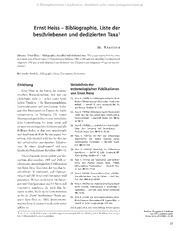
Ernst Heiss - Bibliographie, Liste der beschriebenen und dedizierten Taxa1
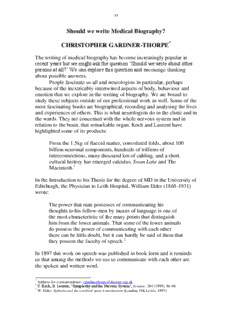
by Christopher Gardner-Thorpe. Page 55 - Evolve360

Plan 2 CS Generator
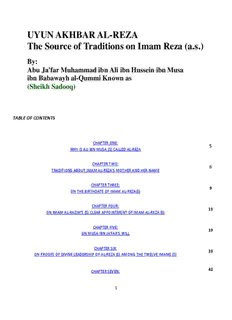
By: Abu Ja'far Muhammad ibn Ali ibn Hussein ibn Musa ibn

Byzantine Gospel Maximus the Confessor in Modern Scholarship
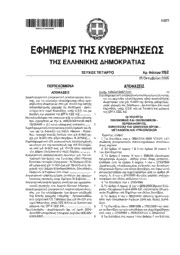
Greek Government Gazette: Part 4, 2005 no. 1152
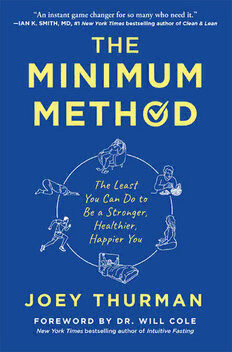
The Minimum Method: The Least You Can Do to Be a Stronger, Healthier, Happier You
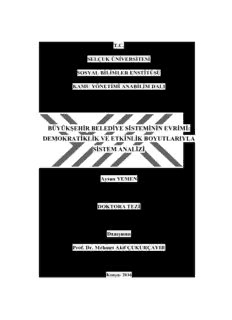
büyükşehir belediye sisteminin evrimi
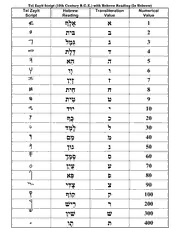
Tel Zayit Script (10th Century B.C.E.) with Hebrew Reading (In Hebrew)

Applied Reinforcement Learning with Python: With OpenAI Gym, Tensorflow, and Keras
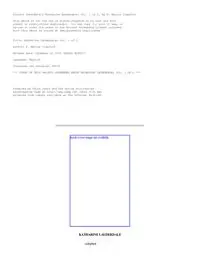
Katharine Lauderdale vol 1 of 2 by F Marion Crawford

ERIC ED362642: Developments in the Curriculum for the Swedish MSc Programme in Agriculture.
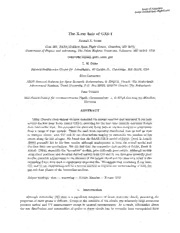
The X-ray Halo of GX5-1
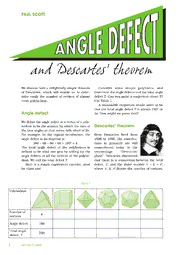
ERIC EJ743583: Angle Defect and Descartes' Theorem
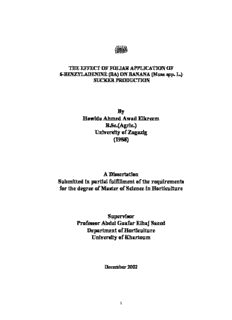
By Howida Ahmed Awad Elkreem B.Sc.(Agric.)
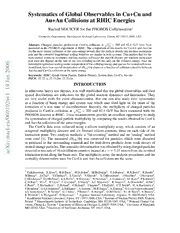
Systematics of Global Observables in Cu+Cu and Au+Au Collisions at RHIC Energies
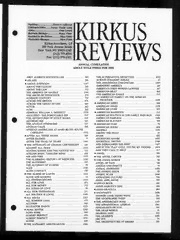
Kirkus Reviews 1993: Vol 62 Index
